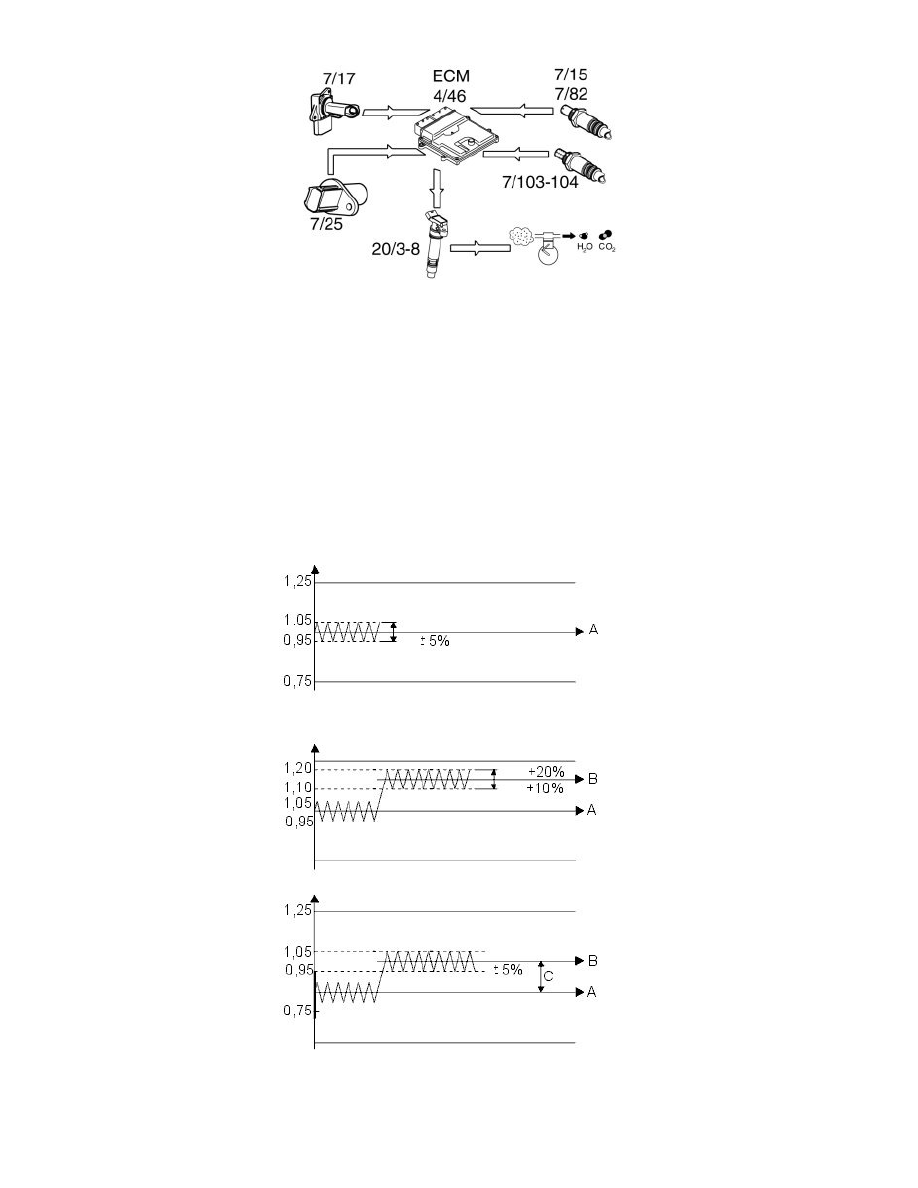XC90 FWD L6-3.2L VIN 98 B6324S (2007)

A base program in the engine control module (ECM) calculates the injection period based on data about load, i.e. the measured air mass and engine
speed (rpm). The calculated injection time (from the base program) is then modified by a circuit (short-term fuel trim). The signal from the heated
oxygen sensor (HO2S) is used to finely adjust the injection period so that lambda = 1 is reached. The short-term fuel trim is a circuit that finely adjusts
the injection period so that the fuel/air mixture is optimized (lambda = 1). The control module also used the signals from the front and rear heated
oxygen sensors (HO2S) to correct the front heated oxygen sensor (HO2S) (offset adjustment) and thereby the injection period. This gives a higher degree
of accuracy during fuel trim. Fuel trim is a rapid process which may take place several times a second. Adjustment of the injection period calculated in
the base program is limited.
The short-term fuel trim can be read off.
Part 2
Function (Continued)
Adaptive functions
Certain factors, for example, tolerance deviations on certain components such as mass air flow (MAF) sensor and injectors, air leakage on the intake
side, fuel pressure etc. affect the fuel/air mix. In order to compensate for this, the engine control module (ECM) has adaptive (self learning) functions.
When the engine is new the short term fuel trim varies cyclically around a nominal central line (A) 1.00, with, for example, a ± 5% change of injection
time when fuel trim is in operation.
If there is air leakage for example, the short-term fuel trim will quickly be offset to a new position (B) and will then work for example between 1.10
